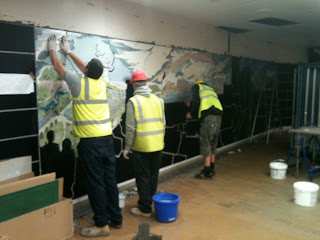INGREDIENTS
2 tablespoons olive oil
1-2 medium leeks, chopped
1.75 litres vegetable stock (I use Marigold Bouillon as it also makes a great winter drink)
300g broccoli cut into florets
300g frozen peas
2 supermarket bags watercress, spinach and rocket salad
Freshly squeezed lemon juice
Freshly ground black pepper
2 cloves of garlic, chopped finely (optional)
1 onion (optional)
METHOD
1. Choose a very large pan. You'll see why in a minute.
2. Heat the oil in the pan and add the chopped leeks (plus garlic and onion if using).
3. Cook over a low heat for about 5 minutes until the vegetables are soft.
4. Add the broccoli and peas and stir well.
5. Add the stock and bring to the boil. See? Full isn't it?
6. Simmer until the vegetables are very soft. You should be able to get a fork into the broccoli but it shouldn't be soggy. This will take roughly 7 minutes.
7. Stir in 1 bag of salad for about 3 minutes.
8. Add the second bag of salad and let it wilt.
9. Liquidise.
10. Season with lemon juice and pepper until the soup has a real zing.
11. There you go - lunch sorted for the week!
















